Table of Contents
- Lipid Absorption
- Chylomicron Formation
- Lipoprotein Transport
- Tissue Uptake
- Lipid Storage
- Lipid Metabolism
- Cholesterol Transport
1. Lipid Absorption
Upon consumption of dietary lipids, they are first broken down into fatty acids and glycerol in the small intestine through the action of digestive enzymes.
2. Chylomicron Formation
The absorbed fatty acids and glycerol are then packaged into chylomicrons within the intestinal cells, which are large lipoprotein particles that transport dietary lipids through the lymphatic system.
When we consume dietary fats, they are transported throughout our body via a process known as chylomicron formation. Chylomicrons are large lipoprotein particles that are responsible for carrying dietary lipids, such as triglycerides and cholesterol, from the intestines to various tissues in the body.
Chylomicron formation begins in the intestines, where dietary fats are absorbed by the intestinal cells. These fats are then packaged into chylomicrons, which are released into the bloodstream and transported to tissues in need of energy or storage.
Once in the bloodstream, chylomicrons travel to tissues such as the liver and muscle, where they are broken down and used for energy or stored for later use. Excess dietary lipids that are not immediately needed for energy are stored in adipose tissue for future use.
In summary, chylomicron formation plays a crucial role in transporting dietary lipids throughout the body and ensuring that they are used efficiently for energy or storage.

3. Lipoprotein Transport
Chylomicrons travel through the lymphatic system and enter the bloodstream, where they interact with various lipoproteins such as LDL and HDL for further transport and processing.
In the human body, lipoproteins play a crucial role in the transport of dietary lipids, such as cholesterol and triglycerides. These lipids are insoluble in water, so they must be carried through the bloodstream in special vehicles called lipoproteins.
There are several types of lipoproteins, including chylomicrons, very low-density lipoproteins (VLDL), low-density lipoproteins (LDL), and high-density lipoproteins (HDL). Each type has a specific role in the transport and metabolism of lipids.
Chylomicrons are the largest and least dense lipoproteins, responsible for transporting dietary triglycerides from the intestines to other tissues for energy or storage. VLDLs are produced in the liver and transport triglycerides synthesized in the liver to tissues for energy.
LDLs are often referred to as "bad cholesterol" because high levels of LDL in the blood can lead to plaque buildup in arteries, increasing the risk of heart disease. HDLs, on the other hand, are known as "good cholesterol" because they help remove excess cholesterol from the bloodstream and transport it back to the liver for disposal.
Overall, the balance of these lipoproteins is crucial for maintaining healthy levels of cholesterol and triglycerides in the body and reducing the risk of cardiovascular disease. By understanding how dietary lipids are transported and metabolized through lipoprotein transport, we can make informed choices about our diet and lifestyle to support optimal health.
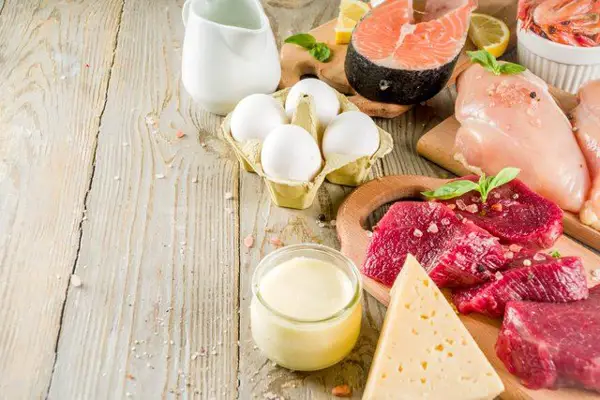
4. Tissue Uptake
Once in the bloodstream, lipids are taken up by various tissues in the body, such as muscle and adipose tissue, where they are used for energy production or stored for later use.
Tissue uptake plays a crucial role in the transportation of dietary lipids throughout the body. When we consume lipids through our diet, they are first broken down in the digestive system and then transported to various tissues via the bloodstream.
Once in the bloodstream, dietary lipids are carried by lipoproteins, such as chylomicrons and LDL (low-density lipoprotein), to different tissues where they are utilized for various functions. Tissues that have a high demand for energy, such as muscle cells, adipose tissue, and the liver, actively take up dietary lipids for fuel and storage.
The process of tissue uptake involves the binding of lipoproteins to specific receptors on the surface of the cells in the target tissues. These receptors facilitate the uptake of lipids into the cells, where they can be used for energy production or stored for later use.
In conclusion, tissue uptake is a crucial step in the transportation of dietary lipids throughout the body, ensuring that our cells receive the necessary nutrients for proper functioning.
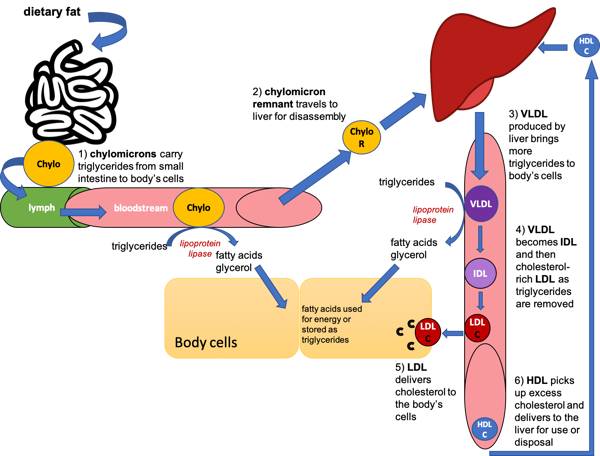
5. Lipid Storage
Excess dietary lipids that are not immediately used by tissues are stored in adipose tissue as triglycerides, which can be broken down and utilized during times of energy deficiency.
Lipid Storage in the Body
Dietary lipids, such as fats and oils, are essential for the body as they provide energy, support cell growth, and help in the absorption of fat-soluble vitamins. Once consumed, these lipids are transported through the bloodstream in the form of lipoproteins, which are complexes of proteins and fats. These lipoproteins help carry the dietary lipids to various tissues and organs where they are stored or used for energy production.
In the body, excess dietary lipids are stored in adipose tissue as triglycerides. These triglycerides are then broken down by enzymes called lipases to release fatty acids and glycerol, which can be utilized by the body for energy when needed. Additionally, dietary lipids can also be stored in the liver as cholesterol or used to produce other important molecules like hormones.
Overall, the transport and storage of dietary lipids play a crucial role in maintaining the body's energy balance and supporting various metabolic functions. It is important to consume a balanced diet rich in healthy fats to ensure optimal lipid storage and overall health.
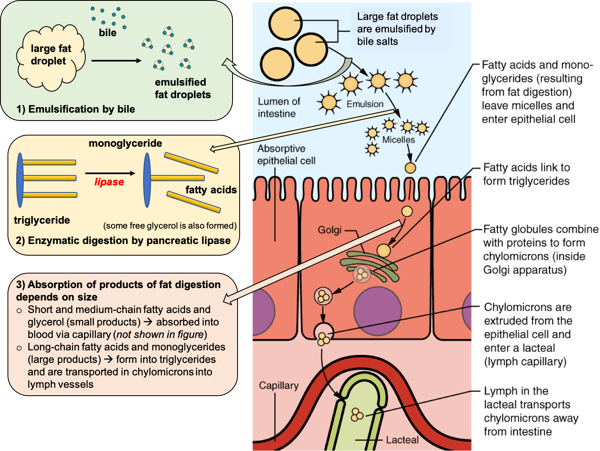
6. Lipid Metabolism
Lipids undergo various metabolic processes within the body, such as beta-oxidation and ketogenesis, to produce energy and maintain lipid homeostasis.
In lipid metabolism, dietary lipids are transported through the body via various pathways. Lipids are absorbed in the intestines and packaged into chylomicrons, which are then released into the lymphatic system and eventually enter the bloodstream.
Once in the bloodstream, lipids can be taken up by cells for energy production, stored in adipose tissue, or utilized for the synthesis of hormones and cell membranes. Lipoproteins such as LDL and HDL also play a role in transporting lipids throughout the body.
Overall, lipid metabolism is a complex process that involves the uptake, transport, and utilization of dietary lipids to meet the body's energy needs and support various physiological functions.
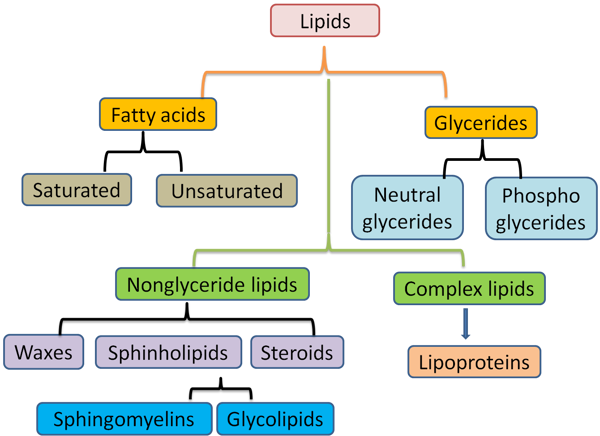
7. Cholesterol Transport
Cholesterol, a type of lipid, is also transported in the body through lipoproteins and is essential for various biological processes, such as hormone synthesis and cell membrane formation.
Cholesterol Transport in the Body:
Dietary lipids are essential nutrients that are necessary for proper cell function and energy production in the body. When we consume foods that contain fats, the lipids are broken down in the digestive system and absorbed into the bloodstream.
Cholesterol, a type of lipid, plays a vital role in cell membrane structure and hormone production. In order for cholesterol to be transported throughout the body, it must be packaged into lipoproteins. These lipoproteins act as vehicles that carry cholesterol through the bloodstream to various tissues and organs.
There are different types of lipoproteins that transport cholesterol, including low-density lipoprotein (LDL) and high-density lipoprotein (HDL). LDL cholesterol is often referred to as "bad" cholesterol because high levels can increase the risk of heart disease. HDL cholesterol, on the other hand, is known as "good" cholesterol because it helps to remove excess cholesterol from the bloodstream and deliver it to the liver for excretion.
Overall, the transport of dietary lipids, including cholesterol, is a complex process that is crucial for maintaining optimal health and function in the body. By understanding how lipids are transported and utilizing dietary strategies to support healthy cholesterol levels, we can help to promote overall wellness and reduce the risk of chronic diseases.
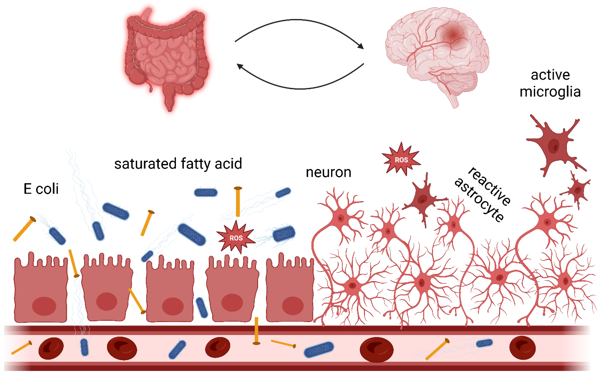
Key Takeaways
- Dietary lipids are absorbed in the small intestine and transported through the body via chylomicrons and lipoproteins.
- Lipids are utilized for energy production, stored in adipose tissue, and undergo metabolic processes for maintaining homeostasis.
- Cholesterol, a type of lipid, plays crucial roles in various biological functions and is also transported in the body through lipoproteins.
FAQ
Q: How are dietary lipids different from other nutrients?
A: Dietary lipids are a concentrated source of energy and are essential for the absorption of fat-soluble vitamins, whereas carbohydrates and proteins serve primarily as sources of energy and building blocks for tissues.
Q: Can excessive intake of dietary lipids lead to health problems?
A: Yes, excessive consumption of dietary lipids, especially saturated and trans fats, can contribute to the development of cardiovascular diseases, obesity, and other health conditions. It is important to consume lipids in moderation and choose healthy sources of fats.
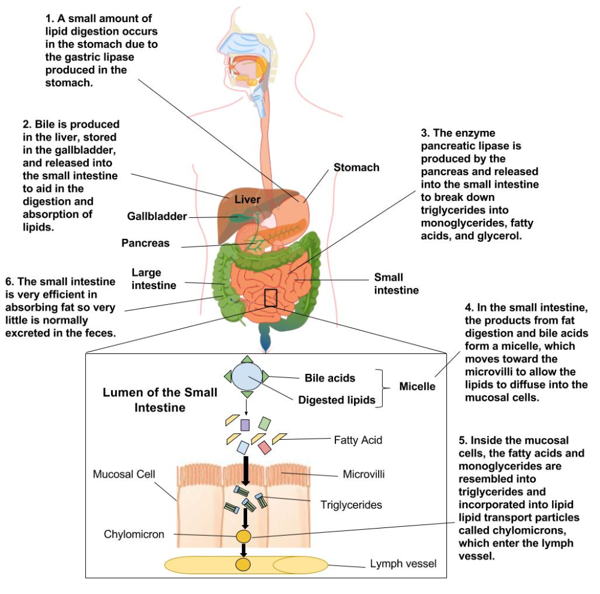


Recent Comments